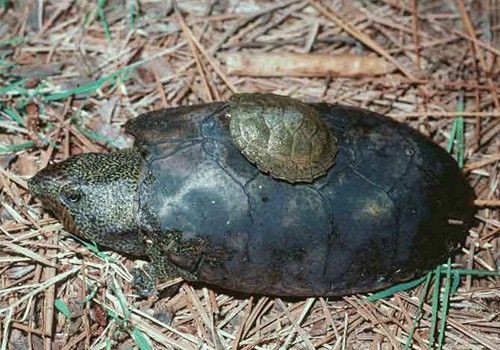Habitat & Species Diversity
Our state boasts five distinct geological regions and profound species diversity. We continue taking steps to protect and enhance critical species habitat that contributes to our state’s extraordinary biodiversity.
Tulotoma Snail
We work to protect this threatened species of aquatic freshwater snail native to the Alabama-Coosa river system through comprehensive studies, strategic partnerships and implementation of targeted watershed management plans. Our contributions to the snail’s recovery have been recognized by the U.S. Fish and Wildlife Service.

Rough Hornsnail
The rough hornsnail (Pleurocera foremani) (RHS) is a species of snail that is federally listed under the Endangered Species Act (ESA). Habitat for this snail species is found on certain sections of the Coosa River system – identified along stretches of Yellowleaf Creek (tributary to Lay Lake) and Mitchell Lake shorelines, and efforts have been made to protect and enhance this habitat.

Flattened Musk Turtle
Through our research and partnership with federal and state agencies, habitat for this small aquatic turtle – found only in the Black Warrior River system – has been identified along the Smith Lake shoreline and efforts have been made to protect and enhance it.

Bald Eagle
A partner in the Alabama Bald Eagle Restoration Project for more than two decades, we help restore bald eagle populations by providing survey research crucial to protecting our national symbol and its habitat on the lakes we manage.

Longleaf Pine
The longleaf pine ecosystem is one of the most diverse on Earth. We manage thousands of acres on our property and work with other partners through the National Fish and Wildlife Foundation to restore and establish new longleaf pine habitat.

Red-cockaded Woodpecker
We have contributed to ongoing efforts to expand populations of the endangered red-cockaded woodpecker, including enhancing longleaf pine habitat near Lake Mitchell and supporting the banding of adults and nestlings to facilitate survey, mapping and monitoring for health.
Our Contribution
- Guidelines for flattened musk turtle habitat published
- 26,000 acres restored in Alabama through Longleaf Legacy
- 6,500 acres pine planted in Alabama through Longleaf Legacy
Environmental Stewardship
We protect Alabama's resources while providing reliable, affordable electricity for our customers.
